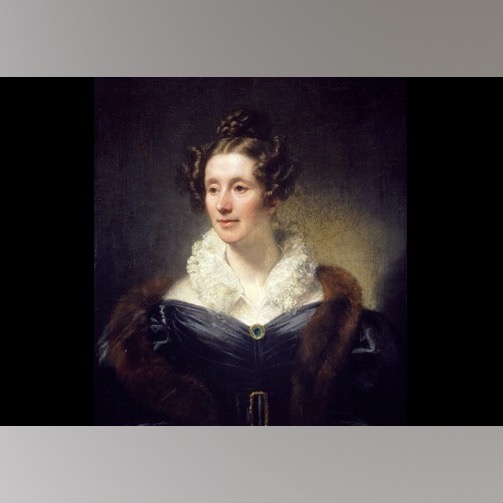29/01/2017 - Lectures, Books
The Ascent of Mary Somerville in 19th Century Society, by Elisabetta Strickland

 Reading time: 1.5 minutes
Reading time: 1.5 minutesThis biography traces the life and work of Mary Fairfax Somerville, whose extraordinary mathematical talent only came to light through fortuitous circumstances. Barely taught to read and write as a child, all the science she learned and mastered was self taught. In this delightful narrative the author takes up the challenge of discovering how Somerville came to be one of the most outstanding British women scientists and, furthermore, a popular writer. Particular attention is paid to the gender aspects of Somerville's success in what was, to put it mildly, a predominantly male domain.
Book Review from Mathematical Assocoation of America
http://www.maa.org/press/maa-reviews/the-ascent-of-mary-somerville-in-19th-century-society
Mary Somerville most likely qualifies as the most capable mathematician in history that I knew nothing about. This is not due to a lack of attention on my part, I have read many math books, some of which have been historical. As a test, I looked in a 900-page introduction to the history of mathematics book that I have: her name does not appear in the index.
Yet she was quite a fascinating character. Her father was a Vice-Admiral in the British Navy and so was away from home for extended periods. In her early years she generally was allowed to run free in the garden; the first attempt to give her some formal schooling, when she was ten, was a failure. Mary was sent to an expensive private school and the restrictions were very difficult and the teacher (Miss Primrose) was very rigid. “She (Mary) was permanently in tears and often constrained in various ways, using methods close to torture.”
Yet all was not for naught, as Mary returned from her ordeal with a new outlook and a desire to read (really devour) books. Mary’s mother disapproved of that form of learning for girls and expected her to learn sewing and needlework. However, Mary had other ideas and this started a life of educating herself and going against the strong social mores of Britain in the 19th century.
Mary was a “Renaissance woman,” teaching herself mathematics and most areas of science. By herself, she also learned Latin and French. She wrote many books on mathematics and science. Indeed, the breadth and depth of her books is very impressive. Her book On the Mechanism of the Heavens (1832) sold out immediately and earned her the first of many awards. The quality of her self-education is summed up in the following excerpt from this biography:
“In fact, she not only translated, but also interpreted Laplace’s work, turning her attention to the most awkward parts of celestial mechanics and reworking all the calculations of the author in such a way that they could be properly understood. I would have enjoyed reading some “before and after” material, quoting first the way Laplace wrote it and then the way Somerville did.
Her subsequent books demonstrated her thorough understanding of the math and science: On the Connexion of the Physical Sciences (1834), Physical Geography (1848), and Molecular and Microscopic Science (1869). Her Physical Geography was used as a textbook until the early twentieth century. That is over fifty years! When you consider the dramatic changes taking place in science at the time, this is amazing.


